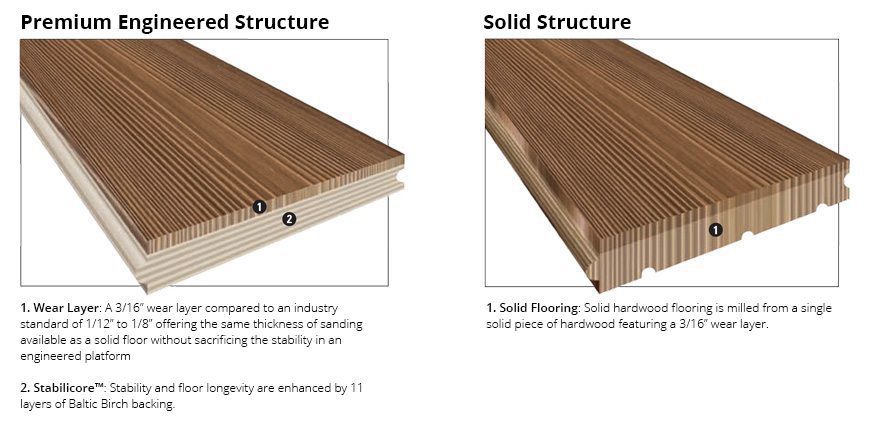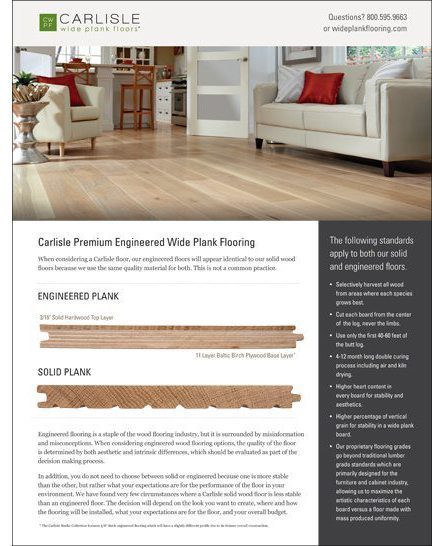Engineered wood floors are a staple in the wood flooring industry, and comprise over 30% of all flooring sold in the US today.
This means that there are literally hundreds of different brands and styles to choose from, which can make it daunting, and often confusing, to choose the right engineered wood floor for your project.
Today, we'll provide you with some valuable insight and a helpful shopping guide to help you learn more as you explore your options.
Engineered wood floors are a staple in the wood flooring industry, and comprise about 30% of all flooring sold in the US today.
This means that there are literally hundreds of different brands and styles to choose from. While this gives the consumer many options to choose from, it can be daunting, and often confusing, to choose the right engineered wood floor for residential and commercial interiors.
Today, we’ll provide you with some valuable insight and a helpful shopping guide, so you can learn more, shop smarter, and explore all your options.
The Difference Between Solid And Engineered Wood Floors: An In-Depth View
As you can see from the images below, a solid wood plank is made from a single piece of wood, while an engineered wood floor is made up of layers.

These layers usually consist of a top layer of wood veneer which provides the desired species, color, and grain, with multiple layers of plywood beneath it which are laid at cross angles for maximum stability.
When compared to traditional wood flooring, engineered wood is designed for clients who prefer engineered construction for their particular climate or installation conditions. Engineered wood floors are perceived in the market as being more stable, especially in more humid environments or conditions. While we have made hundreds of solid wood floors for these types of installations, we are happy to accommodate our clients with dozens of engineered wood flooring styles, so you can always get the look you want, and the construction you prefer.
For more on the differences between solid and engineered wood floors, read Flooring 101: Solid vs. Engineered Wood Floors from our blog,
All Engineered Wood Floors Are Not The Same: It’s About Core Values
Just as a Carlisle solid wood wide plank floor is different from traditional wood floors, our Stabilicore™ engineered hardwood floors are made to a higher standard, and it starts at the core construction of each flooring board.
So, do you really need an engineered wood floor? Or, an even better question is whether you want an engineered wood floor?
There are a lot more things to consider than just the moisture potential of where it will be installed. Our shopping guide offers facts, and questions, to help you make the best decision for your project.
– – – – – –
